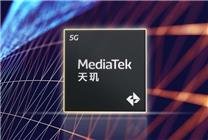The Rising Dominance of ARM in the CPU Market: A Strategic Shift Among Tech Giants
Summary:
- ARM’s server CPU market share has surged to 25% in Q2, driven by innovations from NVIDIA.
- The competition between AMD and Intel remains fierce, but collaboration against ARM is evident.
- Future developments in ARM technology by major companies signal a transformative shift in the computing landscape.
As of September 12, a new landscape is emerging in the CPU market, where AMD and Intel, traditionally rivals, find themselves joining forces in response to the growing presence of ARM processors. Recently, both companies announced that the energy efficiency of x86 architecture has outstripped that of ARM. However, this declaration does little to alleviate the competitive pressure that looms between them.
ARM processors have not only established themselves as formidable players in the PC platform arena but are also making significant inroads into the high-end server market, showcasing impressive growth and capabilities. A recent report by industry analyst Baron Fung from Dell’Oro reveals that ARM’s market share in the server CPU sector has risen dramatically to 25% in Q2, a considerable jump from 15% just a year prior.
The surge in ARM’s market share can largely be attributed to NVIDIA’s strategic launch of the Grace-Blackwell rack-level computing platform, featuring models like the GB200 and GB300 NVL72. This line-up includes NVIDIA’s Grace CPUs, a super CPU architecture built on the ARM framework, boasting configurations with up to 72 cores. This innovative step illustrates how NVIDIA is shifting the competitive landscape in favor of ARM’s architecture.
Though AMD and Intel were well aware of the threats posed by ARM, the rapid advancements spearheaded by NVIDIA took them by surprise. The company’s AI-focused sales have eclipsed expectations, indicating that for many applications, the line between x86 and ARM architecture could diminish in significance, particularly as GPU-driven processing becomes more prevalent.
Yet, ARM’s progress toward achieving an anticipated 50% market share by the end of 2025 remains slower than expected. Nonetheless, the outlook for ARM is promising, with an expanding lineup that includes various players in the industry. NVIDIA’s commitment to enhancing its ARM processor on the Rubin platform signals serious intent, while Amazon and Qualcomm are also diving into self-developed ARM chips, hinting at an era where every major tech player might explore this architecture.
The developments are not confined to server processors alone. Industry titans such as NVIDIA, Qualcomm, MediaTek, Apple, and Huawei are simultaneously innovating and collaborating on PC-grade ARM processors. The next few years could mark a significant equalization of performance capabilities between ARM and traditional x86 processors.
In summary, the CPU market is undergoing a profound transformation, with ARM technology at the forefront of this shift. AMD and Intel may find themselves facing not only each other but also a cadre of new competitors as technology giants pivot towards ARM-based solutions. The implications of these changes extend beyond simple architecture preferences; they signal a future where energy efficiency and performance remain paramount.
As this technological battle evolves, it is critical for businesses and consumers alike to stay informed about these developments and their potential impact on the computing landscape.









